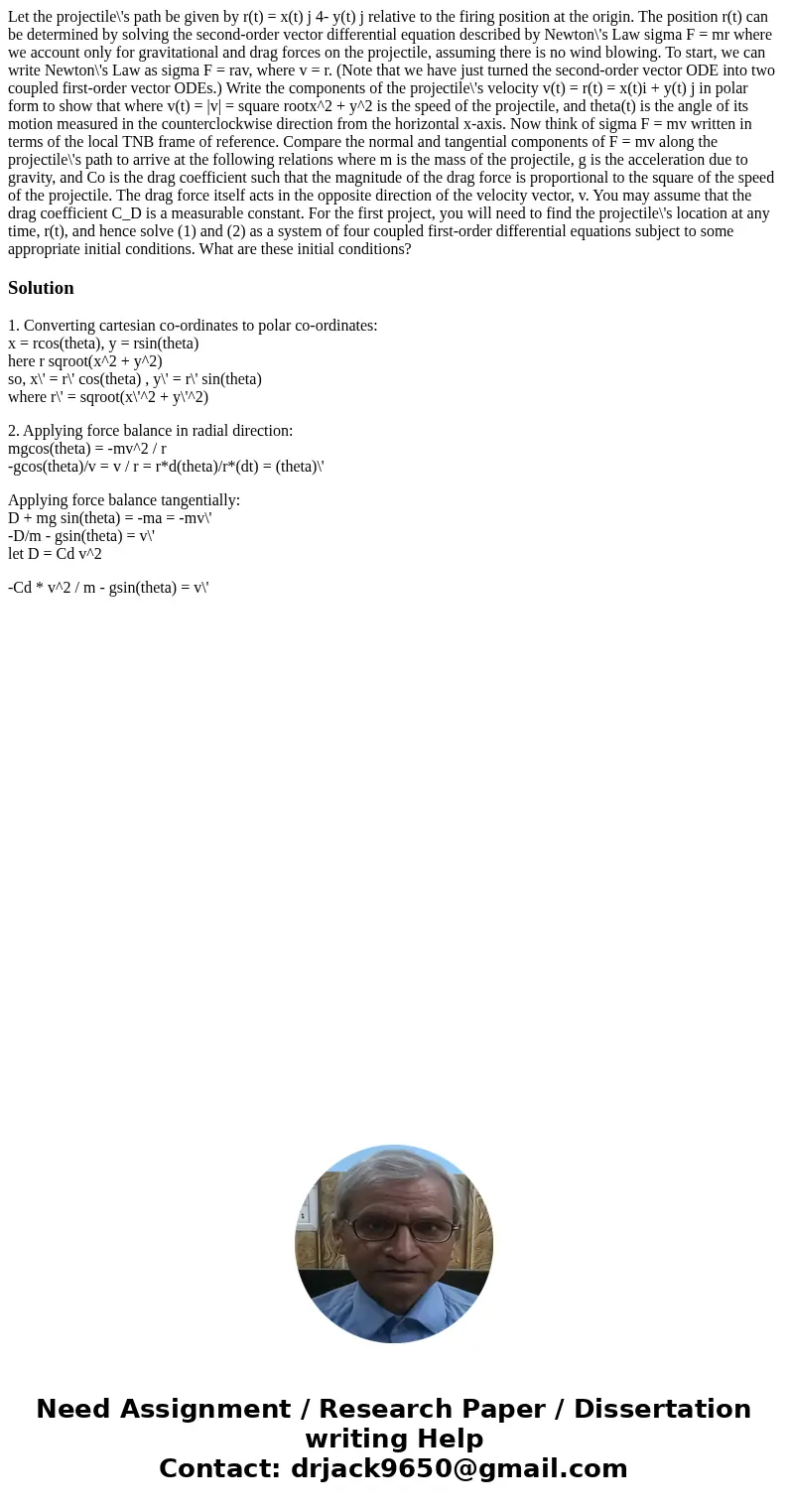Let the projectiles path be given by rt xt j 4 yt j relativ
Let the projectile\'s path be given by r(t) = x(t) j 4- y(t) j relative to the firing position at the origin. The position r(t) can be determined by solving the second-order vector differential equation described by Newton\'s Law sigma F = mr where we account only for gravitational and drag forces on the projectile, assuming there is no wind blowing. To start, we can write Newton\'s Law as sigma F = rav, where v = r. (Note that we have just turned the second-order vector ODE into two coupled first-order vector ODEs.) Write the components of the projectile\'s velocity v(t) = r(t) = x(t)i + y(t) j in polar form to show that where v(t) = |v| = square rootx^2 + y^2 is the speed of the projectile, and theta(t) is the angle of its motion measured in the counterclockwise direction from the horizontal x-axis. Now think of sigma F = mv written in terms of the local TNB frame of reference. Compare the normal and tangential components of F = mv along the projectile\'s path to arrive at the following relations where m is the mass of the projectile, g is the acceleration due to gravity, and Co is the drag coefficient such that the magnitude of the drag force is proportional to the square of the speed of the projectile. The drag force itself acts in the opposite direction of the velocity vector, v. You may assume that the drag coefficient C_D is a measurable constant. For the first project, you will need to find the projectile\'s location at any time, r(t), and hence solve (1) and (2) as a system of four coupled first-order differential equations subject to some appropriate initial conditions. What are these initial conditions?
Solution
1. Converting cartesian co-ordinates to polar co-ordinates:
x = rcos(theta), y = rsin(theta)
here r sqroot(x^2 + y^2)
so, x\' = r\' cos(theta) , y\' = r\' sin(theta)
where r\' = sqroot(x\'^2 + y\'^2)
2. Applying force balance in radial direction:
mgcos(theta) = -mv^2 / r
-gcos(theta)/v = v / r = r*d(theta)/r*(dt) = (theta)\'
Applying force balance tangentially:
D + mg sin(theta) = -ma = -mv\'
-D/m - gsin(theta) = v\'
let D = Cd v^2
-Cd * v^2 / m - gsin(theta) = v\'

 Homework Sourse
Homework Sourse